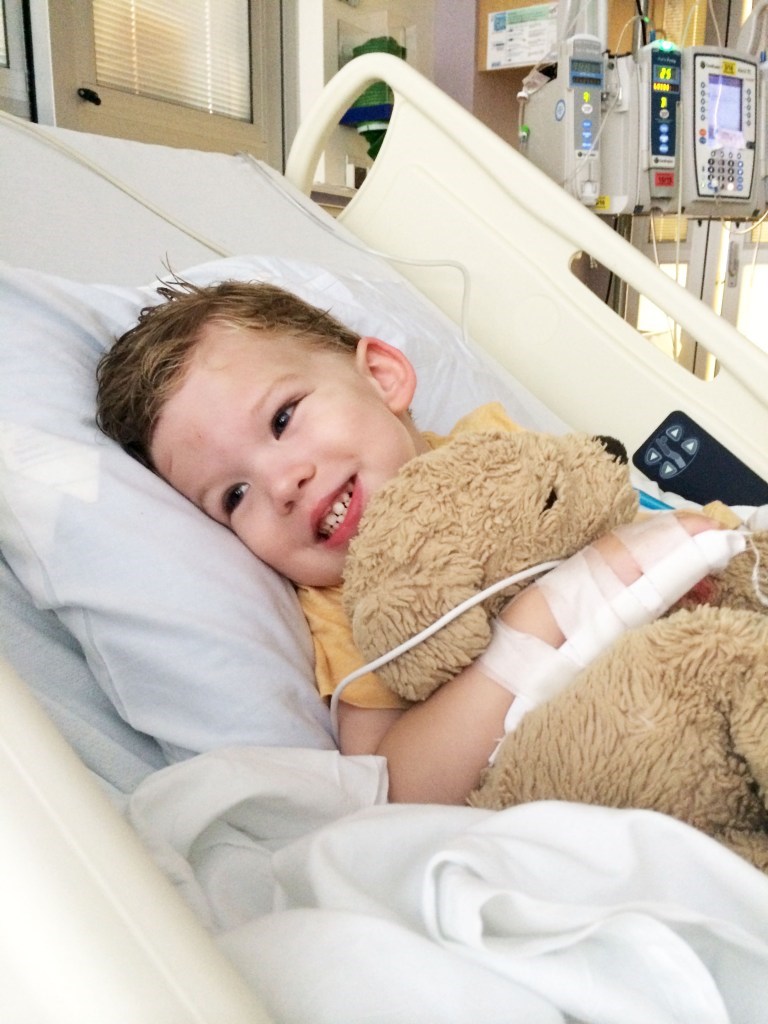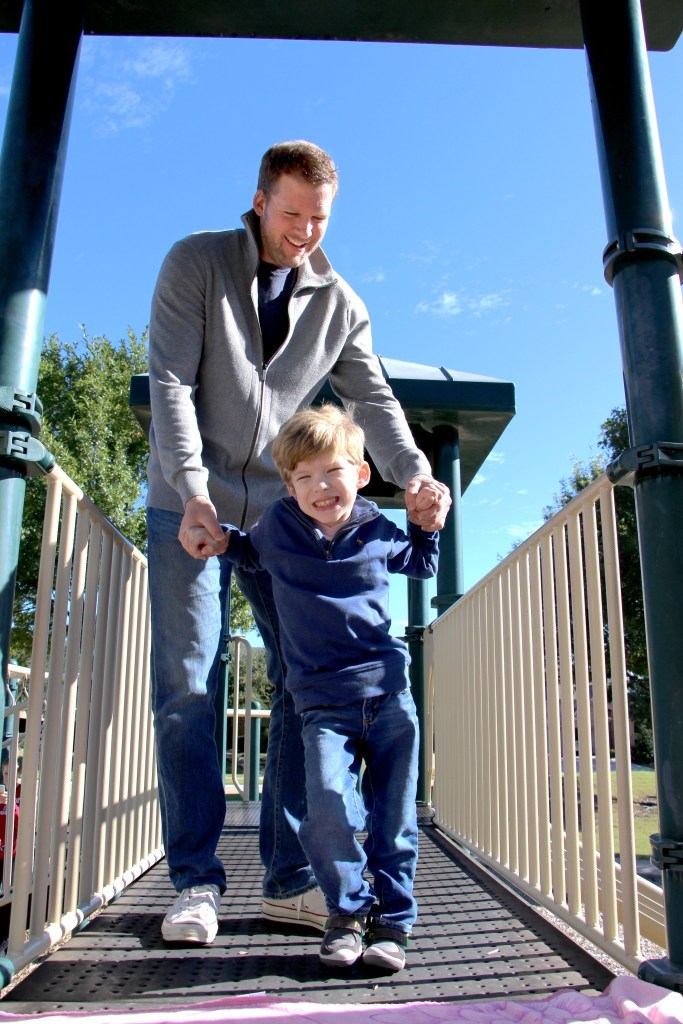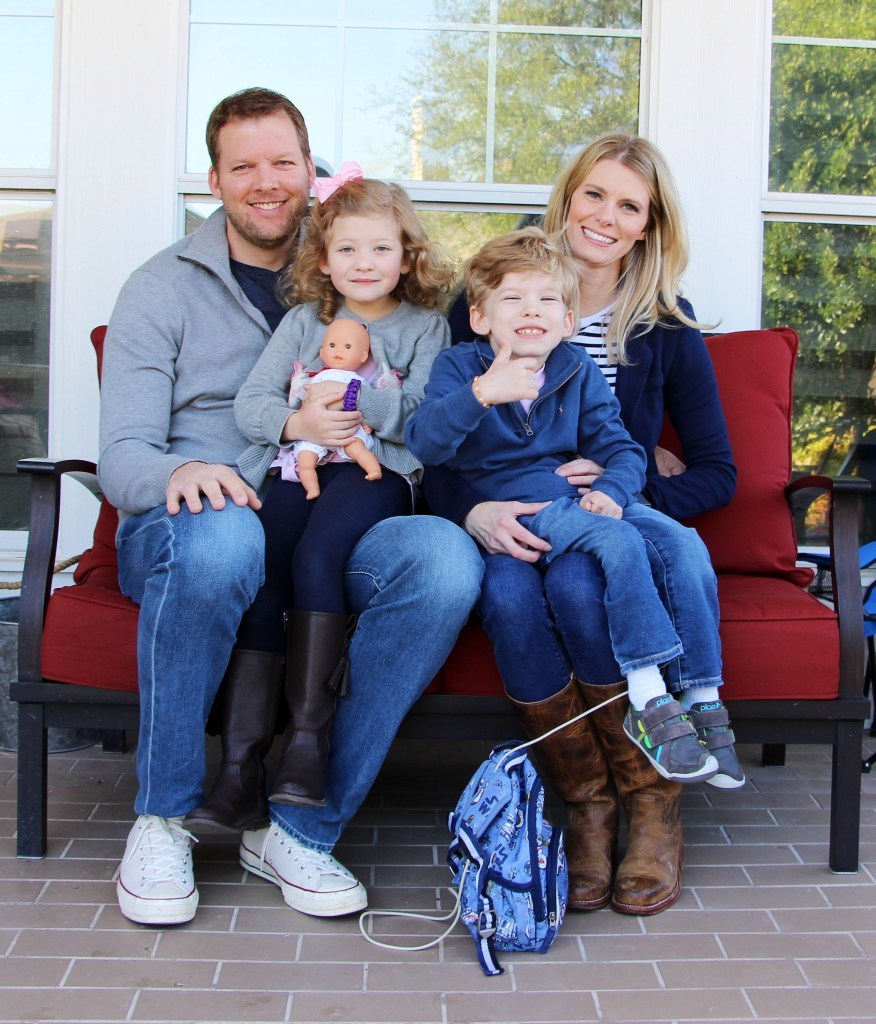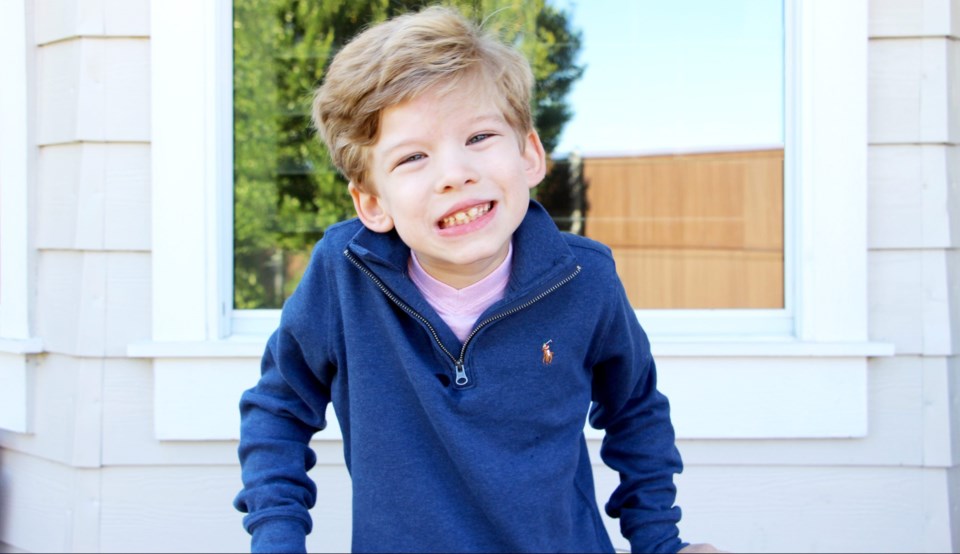Will Woleben will turn age seven on December 21. When he hears the adults around him talking about his upcoming milestone, he grins wordlessly as he looks from face to face, making eye contact with everyone in turn. He’s looking forward to his special day and signals so by giving a thumbs up with his right hand.
At this, his mother Kasey turns from her son and presses the corners of her eyes. She doesn’t want him to see the tears welling up. “For us,” she says in a near-whisper, “Will’s birthdays are really bittersweet.”
Doug and Kasey Woleben recall the news they received on April 15, 2014 in fragments. The phrases spoken by a team of doctors at Children’s Medical Center Dallas cut like knives and took their breath away, leaving them dumbfounded.
“Nothing to be done.”
“Take your son home and enjoy him.”
“He’ll likely die before age 10.”
In 2012, Doug and Kasey welcomed their first child, Will, into the world. At first, nothing seemed amiss. In a video Doug took at his birth, Kasey sees Will for the first time, cooing as she asks him, “Oh, are you okay?” He immediately responds to her voice with a sweetly reassuring cry. As a toddler, Will loved singing and dancing. In footage from Kasey’s smartphone, the smile in her voice is audible as Will follows her around the house, trying to help her with chores. “What are you doing?” she asks. “Are you helping Momma?” “I’m vacuuming,” he says, beaming up at her.
But as Will neared his second birthday, Kasey worried that he wasn’t hitting the normal milestones. Though he had started walking, he often stumbled and fell. He’d usually rise unhurt, but not before waiting patiently on the floor for a few minutes. The behavior was so strange that his parents termed these his “resting episodes”. They began to take Will from one specialist to another. The doctors ruled out everything from seizures to gastrointestinal disorders.
“They all said he was fine.” Kasey waves her hands as she describes the doctors reassuring her, as if they could sweep away her fear. “They told us we had nothing to worry about.”
But Kasey knew in her heart that something was wrong. When Will’s sister Lauren was born in March 2014, Kasey noticed she seemed bigger and stronger than her brother had been at birth. One day when Kasey was nursing her, Will fell down nearby on the floor. He didn’t try to get back up. “He looked up at me and said, ‘I’m okay.’ But I could tell by the look on his face that he wasn’t. He was afraid.”
Kasey called Doug home to watch Lauren and rushed her firstborn to the ER at Children’s Medical Center Plano. Suspecting he’d suffered a stroke, the doctors sent Will by ambulance to Children’s Medical Center Dallas, where he underwent more tests. “The next day they walked us down the hall from Will’s room,” Kasey says. “There was a whole team of doctors, and they sat us down at a table. They showed us the MRI and the dark spots on his brain.”
That day Doug and Kasey learned that two-year-old Will had been born with Leigh’s Syndrome, a rare single-gene disorder that affects only 1 in 100,000 children born worldwide each year. They also learned that they are both carriers of a defective recessive copy of a gene nicknamed Surf1. Though some genes perform roles as simple as determining our eye color, the Surf1 gene is crucial to oxidative phosphorylation, the process by which our bodies’ cells convert the food we eat into energy.

Will received two defective copies of the gene. As a result, his mitochondria are not able to perform the crucial step of energetic conversion, leading to cell death. If Will had received a single effective copy like his sister Lauren did, he would have been fine.
“When the doctors told us the news,” Doug says, “I was glad we finally had a diagnosis.” But when he asked what could be done to help his son, the doctors offered no hope. They predicted Will would not live to age ten. Doug shakes his head at the memory. “‘Nothing can be done,’ they said. ‘There is no cure.’”
Within months Will’s condition began to deteriorate. He was slowly losing the ability to walk, speak clearly, and even swallow. It wasn’t long before he needed more specialized care, including a feeding tube.
Will’s parents and family endured a dark period of shock and grief after the diagnosis. “You could, but you don’t want to fall into a depression,” Kasey recalls. She turns and gives six-year-old Will a drink, wiping his cheek where the water spills. They grin at each other.
Will’s parents rallied. They refused to accept the early pronouncement that “nothing” can be done. Doug began searching medical literature online every night, desperate to find some way to save his son. Over the past five years, Will’s parents have corresponded with multiple drug companies and flown hundreds of miles for experimental treatments. In 2014, they were able to get Will enrolled in a drug trial in Houston and drove him back and forth for the associated tests. Though the compound seemed to help stabilize his condition, the drug company halted the trial and pulled the drug, saying they didn’t find enough evidence it worked.
Despite the heartache and uncertainty of fighting such a rare and severe diagnosis, the Woleben’s say that their story is not a tragic one. In part, this is due to the spirit of their family and Will himself. Though it all, Will has remained a gregarious, outgoing boy whose eyes shine. Seated in his wheelchair, he often plays hockey with his father and sister, and he doesn’t give up until he gets a goal.
From across the table, his dad asks, “What do you want to be when you grow up?”
Will arches against the chair’s headrest and throws his arms in the air. His smile is so wide you can almost hear the cheer of an entire crowd behind him. “A goalie,” he says with a murmur that Kasey interprets as she runs her fingers through his thick, wavy hair.

Doug and Kasey’s hope that Will does have a future is growing. Though the Wolebens can hardly believe it, this year they have found themselves at the epicenter of a possible medical miracle.
At the beginning of 2018, the Wolebens learned from Dr. Berge Minassian—Will’s neurologist at UT Southwestern Medical Center—that the hospital is working to build a premier gene therapy center right here in Dallas. Dr. Minassian sent Will’s case to Dr. Steven Gray, a research scientist who has dedicated his career to developing gene therapies for illnesses similar to Will’s. He had recently joined the UT Southwestern faculty to head the gene therapy lab.
Earlier in 2016, Dr. Gray pioneered a new way to inject gene therapies into a patient’s spinal cord. The $6 million-dollar trial was funded by the National Institutes of Health and involved 11 children who received treatment for another rare genetic disease, Giant Axonal Neuropathy (GAN). The first-of-its kind treatment proved safe and showed efficacy in slowing the disease’s progression.
“We’d heard about gene therapy before, but we never thought it would be ready in time to possibly save Will,” Doug says. “We thought it could only happen many years in the future. But with the doctors at UT Southwestern, we’ve learned the science is catching up to the disease.” His voice grows more emphatic when he says: “Today, finding a cure is possible. And it has huge implications. Combined, genetic disorders are not rare. There are over 6,000 defined disorders, and all together, they affect more people than cancer.”
When asked to describe what a cure might look like for his son, Doug explains, “They will use a special virus that is safe for humans as a kind of packaging. They’ll insert a healthy copy of the Surf1 gene into the virus cells, and then they’d deliver those cells into Will’s body via a spinal tap.” He motions as if he’s plunging the needle himself. Kasey’s face lights up as she imagines the virus replacing the mutated gene throughout her son’s brain cells with healthy Surf1 copies. “It would literally be trillions of cells,” she chimes in, “and he’d only need one shot.”
Now only two things stand between the Woleben family and the chance for an experimental cure. Time—which Will is running out of—and money.
Because illnesses like Leigh’s Syndrome and GAN are very rare and require cutting-edge medical research to find a cure, the trials for potential treatments are extremely expensive. With limited state and federal funding available, parents like Doug and Kasey often find themselves caring for their seriously ill children, while also leading grassroots fundraisers.
When the Wolebens learned that Dr. Minassian and Dr. Gray choose which ultra-rare disorders to study based on scientific merit, as well as the availability of families to join—and help raise funds for—clinical trials, they established a non-profit with the help of two other families whose children also have Leigh’s Syndrome. By October of this year, the Cure Surf1 Foundation had raised almost $500,000 through their donation page toward a goal of $3.3 million to fund the research through an FDA-approved human trial.
But when friends of the Woleben family realized how much effort the family was spending to raise funds through silent auctions, raffles, and golfing tournaments, they also banded together to create a campaign they call One Day for Will. The goal of their campaign is to raise the rest of required funds in a single day on GoFundMe this Christmas Eve. If the Dec. 24 campaign succeeds, the family—and Dr. Gray and his team of researchers—can wake up to one of the best Christmas presents of all.
With the money in the bank—a miracle in itself to the Wolebens—Doug and Kasey would be able to focus their energy on raising their family and caring for Will’s special needs. And Dr. Gray and his team could pursue a possible cure at top speed. Because he’s working with such vulnerable patients, Dr. Gray completes portions of his research in tandem rather than step by step. If all goes as planned and Will is stable enough to be part of a human trial, he could receive his “one shot” from Dr. Gray in under two years.
The Wolebens are honest with themselves: even if Dr. Gray’s pre-clinical work shows promise, they know that time might run out for their son. But, Kasey explains, “This is a risk we are absolutely willing to take. We believe this research could eventually help millions of people.”
Doug agrees with a nod. “This is not just about our family. This research is going to change medical history.”

The doctors and researchers at UT Southwestern are confident that if they can find a treatment or cure for one single-gene mutation, they have a good chance of finding one for all 6,000 disorders caused by single-gene mutations. Even better, they hope they’ll be able to apply the research to finding treatments for other diseases which involve multiple genetic breakdowns, such as Alzheimer’s.
For now, Will tires easily when the family visits the park. After his parents help him down the smallest slide just once, he is content to sit in his chair and watch his sister as she climbs repeatedly up the slide and rides back down. He laughs soundlessly every time, giving the thumbs-up for all of her antics.
Now for Will’s family there is hope. Now when Will Woleben raises his arms in the air and tells you he wants to be a goalie someday, it’s easy to imagine it.




